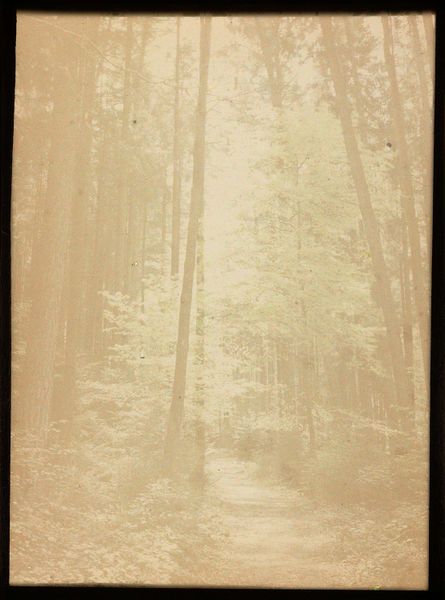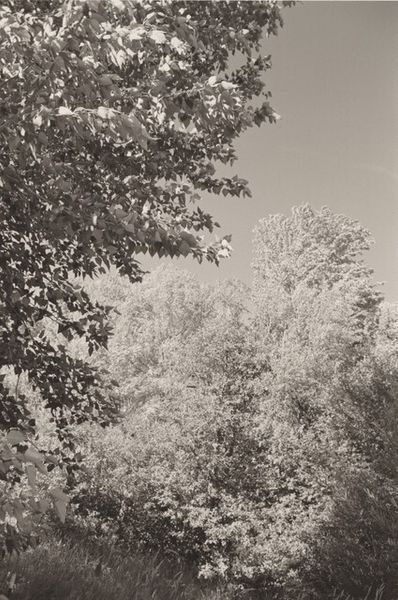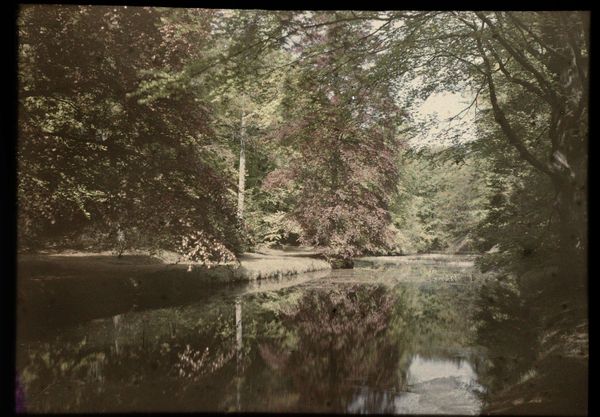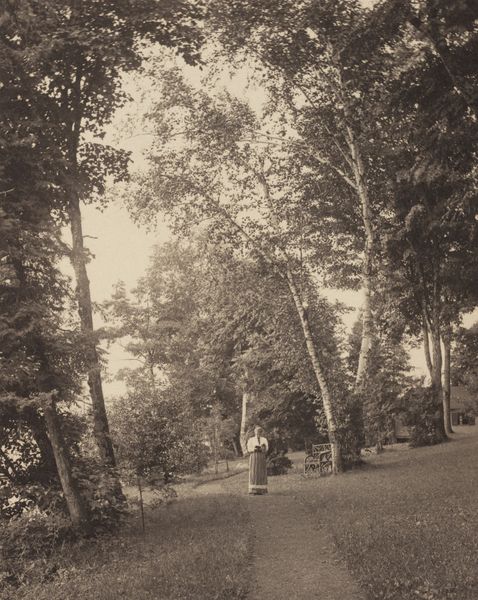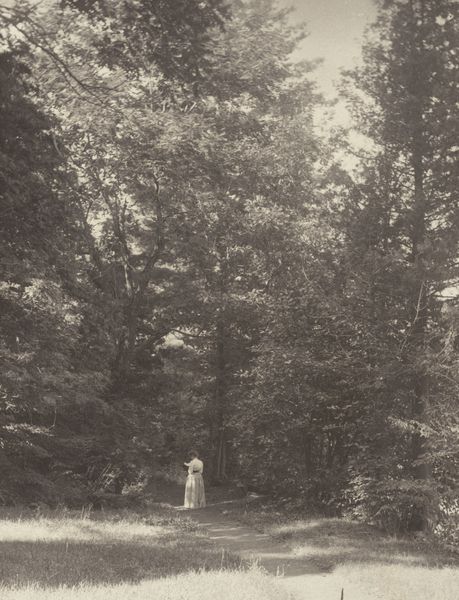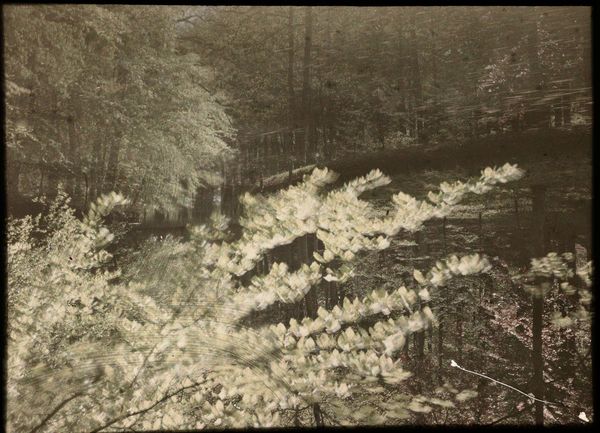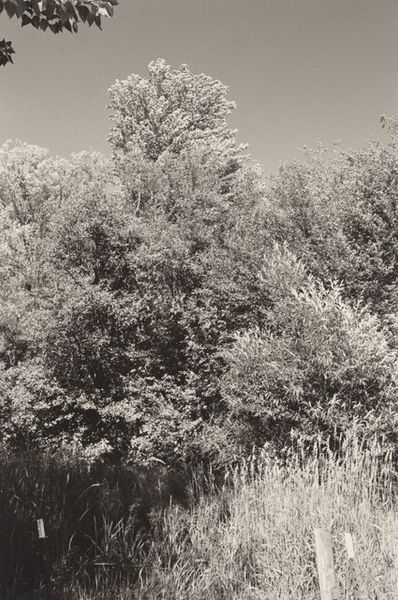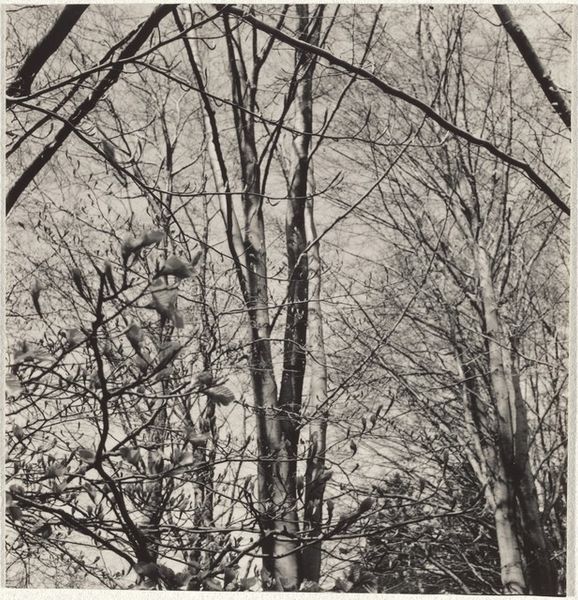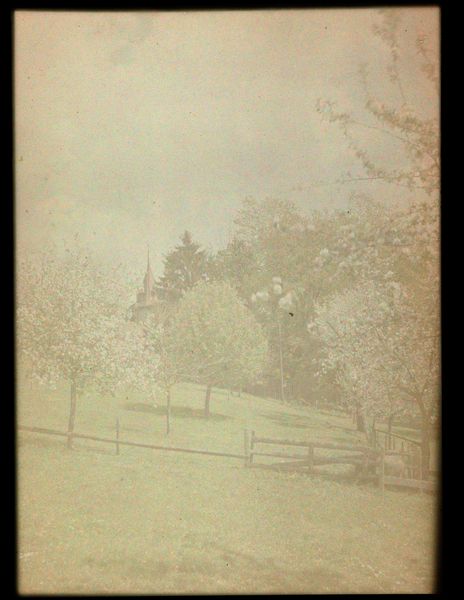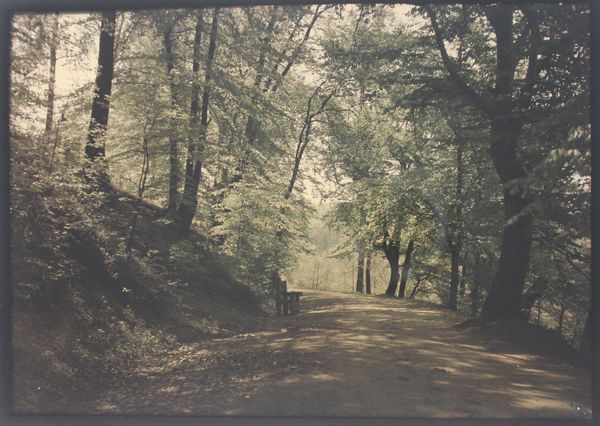
photography
#
still-life-photography
#
pictorialism
#
landscape
#
nature
#
photography
#
natural texture
#
naturalism
#
realism
Dimensions: height 119 mm, width 89 mm
Copyright: Rijks Museum: Open Domain
Curator: Ah, welcome! Here we have a work from between 1907 and 1930 by Adolphe Burdet, called "Gezicht in een bos, met veel herfstbladeren op de grond," which translates to "View in a forest, with many autumn leaves on the ground." It resides here at the Rijksmuseum. Editor: Okay, immediately I’m getting this whisper of faded sepia memories. There's something profoundly quiet and melancholic about this forest floor, blanketed in what looks like perpetual twilight. It’s a real memento mori moment. Curator: It’s a great example of pictorialism, the technique focusing on achieving painterly effects in photography. Think about the rise of photography in the late 19th century. The photographers were eager to prove the artistry in this new medium, and sought to imitate painting in their photographs. Editor: Imitate they did! I find myself longing for some saturated colors! I almost want to jump in and hand-tint this picture, you know? Give those leaves a punch of scarlet and gold that perhaps reflects the emotions that aren't there. It needs a shot of serotonin, doesn't it? Curator: Well, while the tones may seem muted now, such subdued hues would have appealed to the aesthetic sensibilities of the early 20th century, suggesting depth of feeling while reinforcing a sense of romanticism. Naturalism was en vogue at the time. This aesthetic also promoted a type of escapism, something nature has historically symbolized. Editor: That escape doesn't quite come across to me here. It feels claustrophobic in a way, maybe because there’s not that sky exposure usually found in typical landscape photography, instead of an encompassing thick foliage and these dead leaves. Perhaps it's reflective of inner emotional state, rather than a mere aesthetic preference? Or maybe just allergies kicking in, who knows? Curator: An intriguing idea! Perhaps Burdet was subconsciously expressing more complex emotions concerning this period? Or were they influenced by outside events? I mean, just consider what’s happening at the beginning of the artwork's creation. Industrialism is shifting artistic focus, societies are on the precipice of turmoil. How could that not have affected their imagery? Editor: Exactly! So, maybe, beyond its art historical value, this piece reminds us that even in attempting to capture the "natural," we're really capturing a slice of the cultural soup of that time period! Or it really is just hay fever. I guess we will never know! Curator: Indeed, there's a wonderful complexity here.
Comments
No comments
Be the first to comment and join the conversation on the ultimate creative platform.
